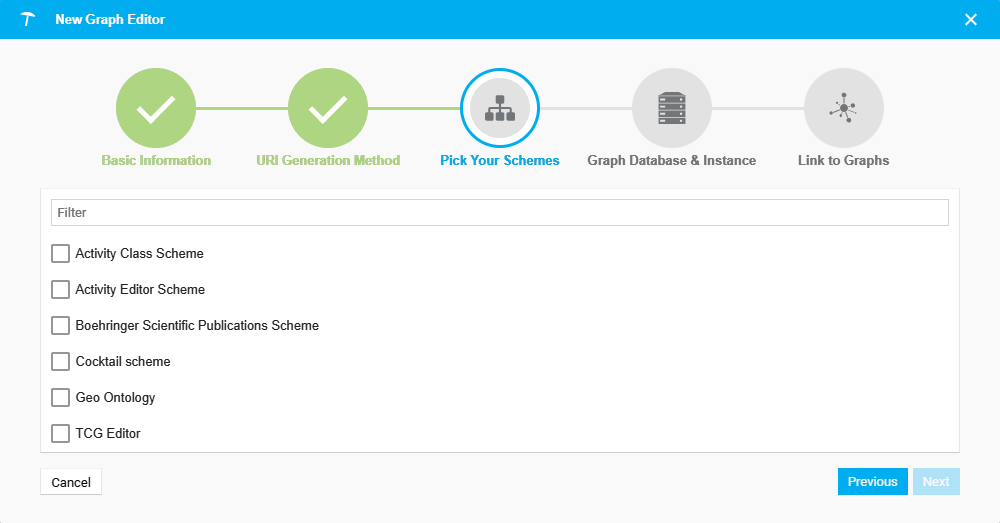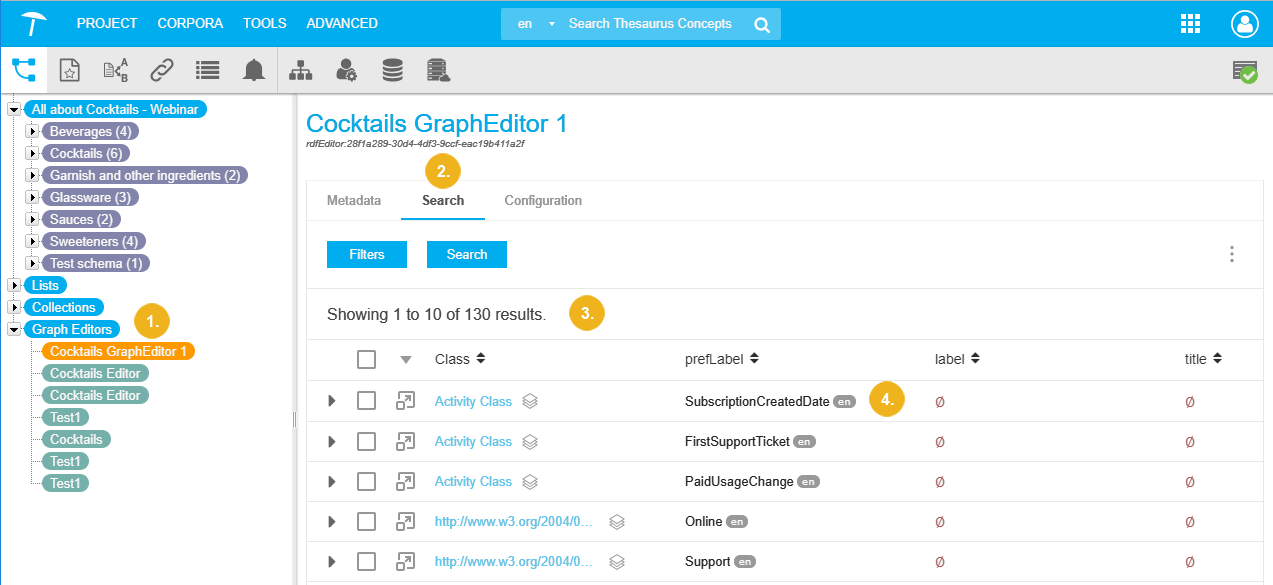PoolParty GraphEditor - Overview
The following section provides an overview and guide on how to use the PoolParty GraphEditor to edit RDF data in PoolParty.
PoolParty offers a unique tool for editing RDF data directly, the PoolPartyGraphEditor. It integrates tightly with the PoolParty interface and can be used easily after you have opened your project.
The PoolParty GraphEditor lets you work on the data your knowledge graph is stored in, directly. Knowledge graphs are at the heart of any serious enterprise data management endeavour: you create a model of your knowledge domain, be that pharmaceutical, healthcare or finance, for example. Thesauri would be at the core that you might integrate with PoolParty. Additionally, you use ontologies as another layer of knowledge as well as a structure that extends the existing relations.In PoolParty, the RDF standard is used to store these in triples on the server. The option to edit these RDF data triples using our GraphEditor right from inside the interface is unique among Semantic Web applications.
Since in PoolParty the graphs that are basis for all data are stored either locally or remotely in RDF format, using this editor you have a number of options: you can refine triples, create or change relations among their properties or their names and labels and even create new resources. The graph editors are project dependent and you can create any number of editors per project.
The data you will need and should prepare before starting to create editors are a PoolParty thesaurus, which means a PoolParty project, and one or more custom schemes. Additionally, you have to correctly configure the connection to the external graph database you use in the Semantic Middleware Configurator, see: Semantic Middleware Configurator - Overview . One way to prepare the graphs on the external graph database would be to Export to External Graph Database.
A state-of-the-art interface and an assistant let you quickly set up an editor to select from available schemes, define the URI generation method for resources you might want to create, the external graph database and the graphs you want to edit, as shown in the following image:
 |
The GraphEditor (1), once set up, lets you edit the underlying RDF data using the Search tab (2) and the filtered data (3), providing easily editable fields (4) as well as batch operations.
 |
The GraphEditor Services APIs that are available for the GraphEditor feature let you interact with existing editors, create new ones or delete them.
The following topics will guide you through setting up graph editors and use them to advantage:
For more information, see: Repository and Graph Structure of Data Stored in PoolParty
Working with the PoolParty GraphEditor — This section provides a short introduction on the PoolParty GraphEditor and how to work with this feature.
Setting Up and Removing Graph Editors — This section provides details on prerequisites and on how to set up graph editors in PoolParty.
GraphEditor Configuration — In this section you find all details on the configuration options, namely the Metadata tab and the Configuration tab.
Working with Resources in the GraphEditor — This section will guide you through the wealth of resource editing options in the GraphEditor feature of PoolParty.
How to Access a Graph Editor — This section contains a short guide on how to access an existing graph editor in PoolParty.
GraphEditor - Resource Editing — This section contains several guides on how to edit RDF graphs' data resources in PoolParty using the GraphEditor feature.
Searching and Filtering Resources — A very important aspect of the GraphEditor feature is the searching and filtering of resources inside of it. This section covers the topics related to these functions.
Importing and Exporting Data inside the GraphEditor — Each graph editor in PoolParty lets you import and export the data inside it as RDF data. This section contains topics that guide you through import and export options.
Export Graphs to RDF Format — This section contains a short guide on how to export graphs from your graph editor into RDF serialization formats that PoolParty supports.
Import Graphs from RDF Format — This section contains a short guide on how to import graphs from RDF serialization formats PoolParty supports into your graph editor.